
Overview
Personio is Europe’s leading HR software, helping over 10,000 companies streamline their people operations, from recruiting to payroll, all in one powerful and easy-to-use platform.
Support was one of Personio’s biggest pain points, cited in customer surveys as the top reason users considered leaving the product. Many found it difficult to navigate the various channels, know where to start, or understand what to expect after submitting a request.
As the Experience Lead for the Customer Enablement vertical, my mission was clear: to transform support into a unified, streamlined, and genuinely helpful experience powered by AI. It was time to build a Support experience customers would actually love.
My role
Product Vision
During the Framing phase, I helped analyze background data and insights to shape clear problem statements, desired outcomes, and success metrics.
Design Owner
Research Driver
Collaboration Advocate
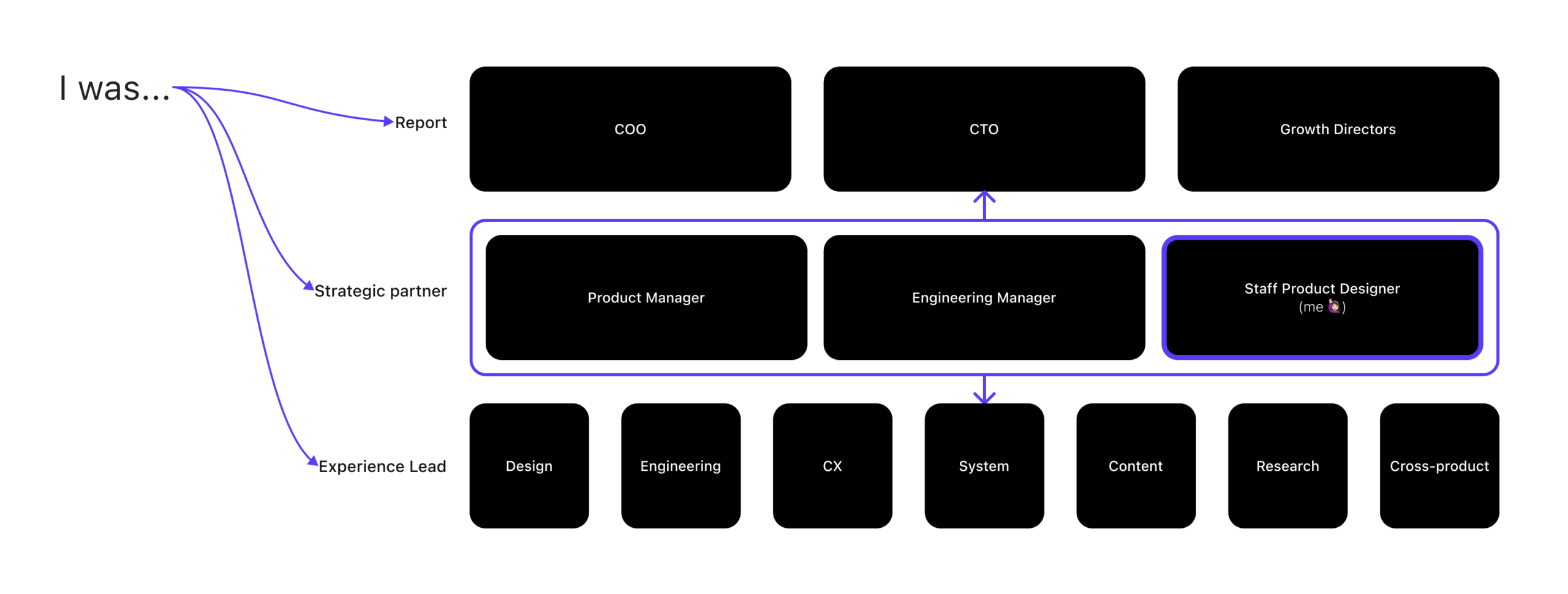
Design process

💬
Every design screen underwent extensive exploration.

Success metrics
The primary focus is to increase customer love and enhance the post-sales support experience while improving operational efficiency without compromising quality.
PO
📈 Increase Customer Love (CSAT)
P1
📉 Reduce Resolution Time
P2
📉 Reduce Contact Rate
Outcomes
One Unified Support Landing Experience
Before
Fragmented support entry points. No unified landing experience.
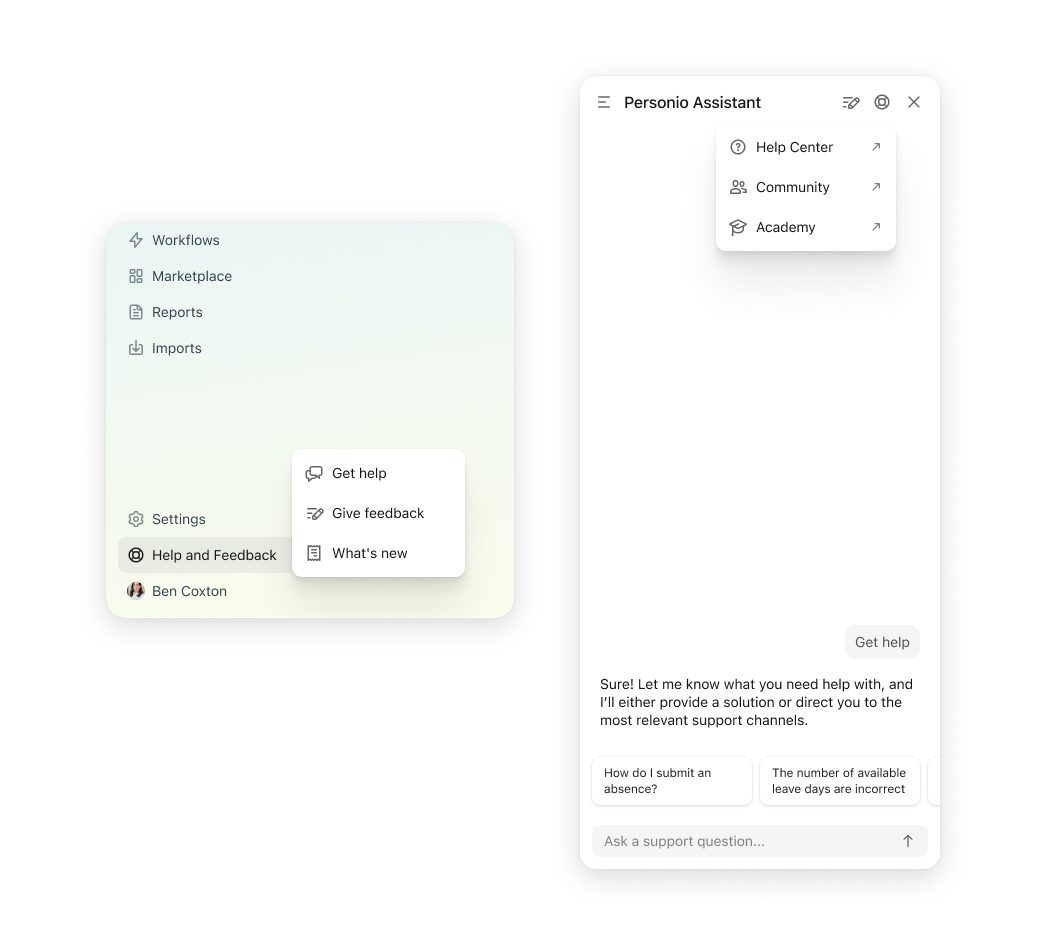
After
A Support Landing Page accessible from the sidebar: AI-driven, user-validated, and enriched with curated self-serve content and product learning links.
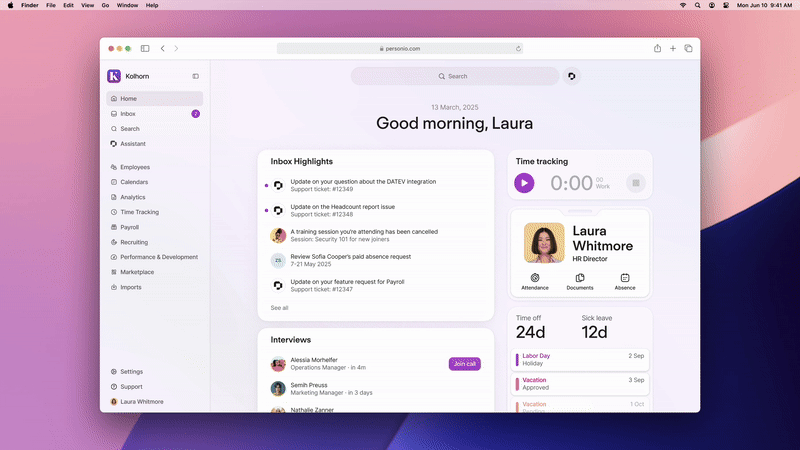
In-app Support Tickets and Support History
Before
Users received responses to their support requests via email and had no visibility into past or ongoing requests within the app.
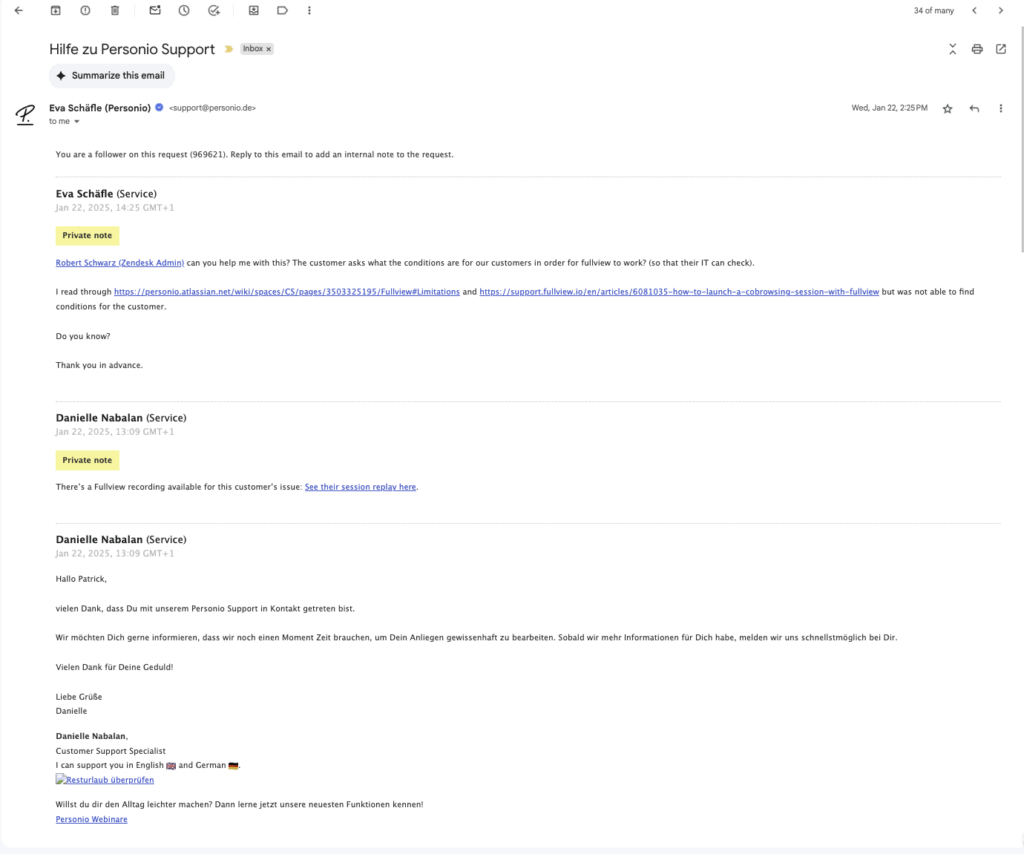
After
Users can access a Support History hub on the Support Landing Page, where they can easily track and manage all past and active support conversations and requests. Each support case has a dedicated view, displaying history, metadata, progress, and status updates in a clear, conversational format.
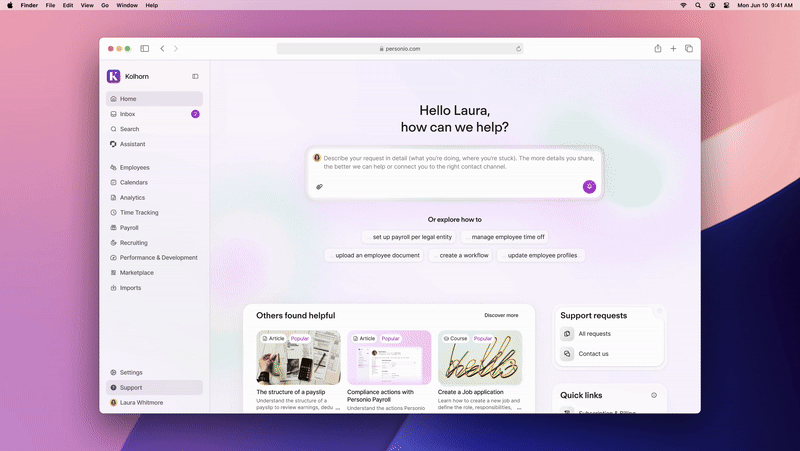
In-App & Out-of-App Support Notifications
In-app Inbox

Branded email notifications

Unified Conversational Contact Us Flow
Before
Fragmented form-based modals that aren’t connected to the Support AI chat and require users to repeat information.
After
Support chats seamlessly escalate to human support within the same conversation. No modals, no disruptive transitions. Everything is recorded in the Support ticket view.

Fin Integrated into Support AI
Before
Button-based Support AI with no multi-turn capability and limited deflection. The chat lives in a separate modal among many fragmented support entry points.
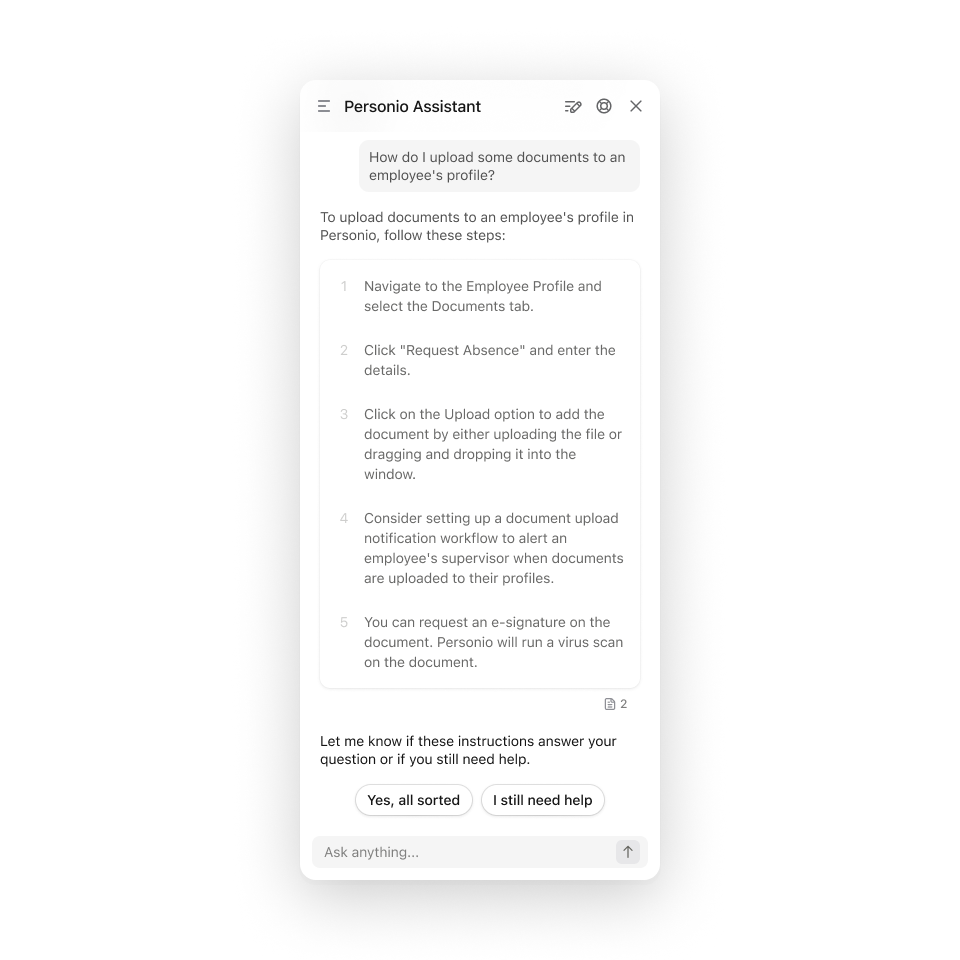
After
Fin is integrated into Support AI, enabling multi-turn conversations without button prompts, with the ability to ask follow-up questions and escalate to human support when needed. The experience feels like talking to an agent, letting users focus on solving their problem.
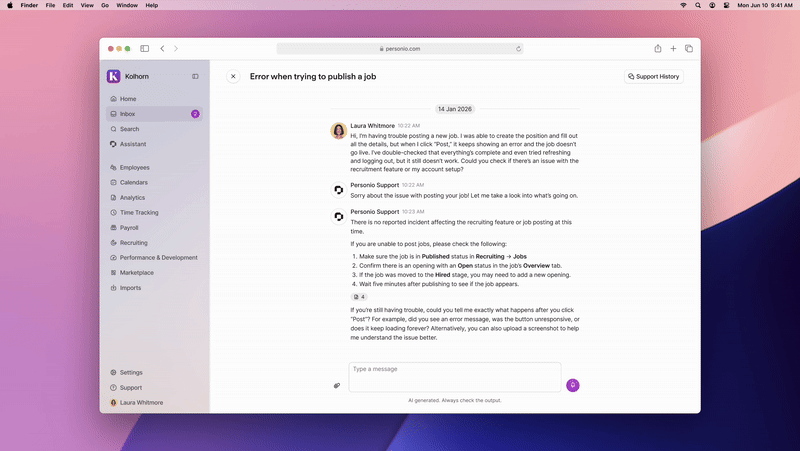
Advanced controls for support tickets
Share ownership of support requests with authorized colleagues.

Mark a support request closed and reopen it anytime.

In-app Support CSAT Flows
Self-serve CSAT

Support Request CSAT
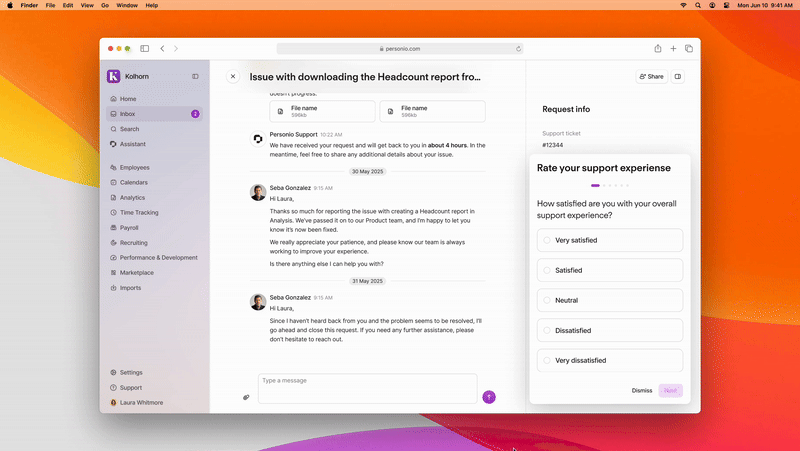
Designed for mobile, delivered with dark mode
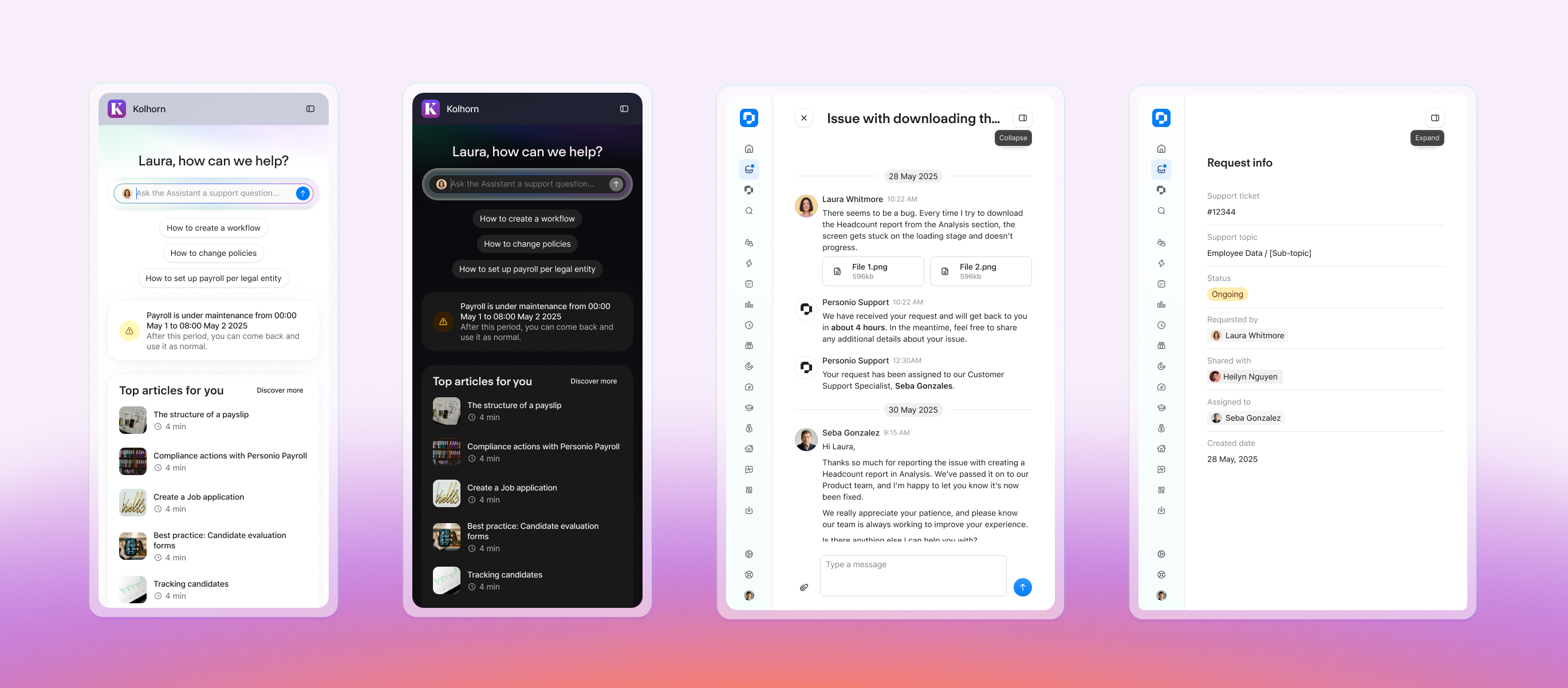
Impact and Success



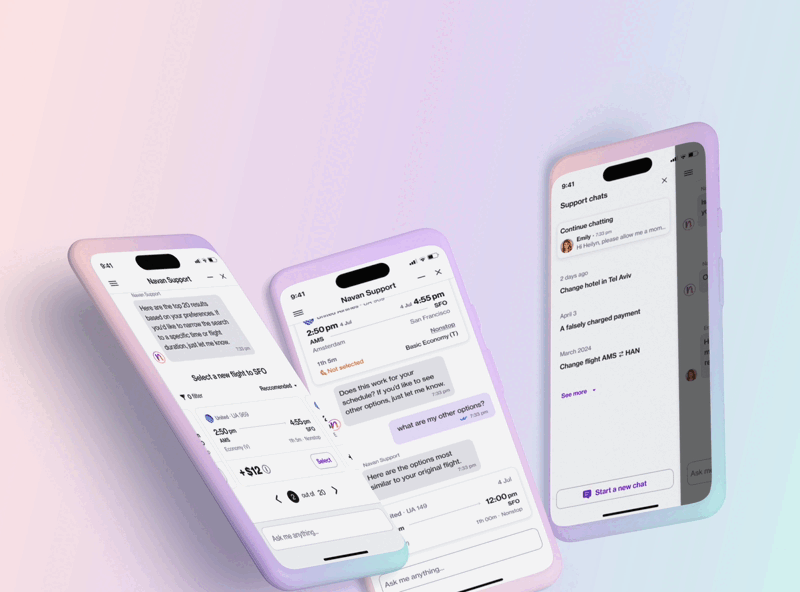
Leave a Reply
You must be logged in to post a comment.